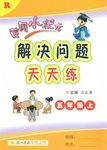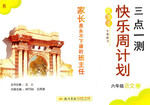题目内容
(C)
Astronaut Jim Voss has enjoyed many memorable moments in his career,including three space flights and one space walk. But he recalls with special fondness a decidedly earthbound(为地球引力所束缚的)experience in the summer of 1980 when he participated in the NASA ASEE Summer Faculty Fellowship Program. Voss, then a science teacher at West Poin,was assigned to the Marshall Space Flight Center's propulsion(推进) lab in Alabama to analyze why a hydraulic fuel pump seal (液压燃料泵的密封圈)on the space shuttle(航天飞机) was working so well when previous seals had failed. It was a seemingly tiny problem among the vast complexities of running the space program. Yet it was important to NASA because any crack in the seal could have led to destructive results for the astronauts who relied on them.
“I worked a bit with NASA engineers,” says Voss, “but I did it mostly by an analysis. I used a handheld calculator, not a computer, to do a thermodynamic(热力学的) analysis.” At the end of the summer,he,like the other NASA ASEE fellows working at Marshall,summarized his findings in a formal presentation and detailed paper. It was a valuable moment for Voss because the ASEE program gave him added understanding of NASA,deepened his desire to fly in space,and intensified his application for astronaut status.
It was not an easy process. Voss was actually passed over when he first applied for the astronaut program in 1978. Over the next nine years he reapplied repeatedly,and was finally accepted in 1987. Since then he has participated in three space missions. The 50 year old Army officer,who lives in Houston,is now in training for a four-month mission as a crew member on the International Space Station starting in July 2000.
Voss says the ASEE program is wonderful for all involved. “It brings in people from the academic world and gives NASA a special property for a particular period of time. It brings some fresh eyes and fresh ideas to NASA,and establishes a link with our colleges and universities,” Voss explains. “There's an exchange of information and an exchange of perspectives that is very important.”
For the academic side,Voss says,the ASEE program also “brings institutions of higher learning more insight into new technology. We give them an opportunity to work on real world problems and take it back to the classroom.”
66. Why was the hydraulic fuel pump seal important for the space shuttle?
A) Because previous seals all failed.
B) Because it was very complex in running the space program.
C) Because great care has to be taken of the hydraulic fuel pump sealing.
D) Because any crack in the seals would cause disastrous results for the astronauts.
67.The great significance of Voss's findings lies in_________ .
A) strengthening his determination to join in space flights
B) furthering his understanding of NASA
C) consolidating his astronaut status in NASA programs
D) Both A and B
68. How many flights will Voss have finished if his four-month mission starting in July 2000 ends up successfully?
A) Three B) Two C) Four D) Five
69. Which of the following is NOT TRUE according to what Voss said on the ASEE program?
A) Fresh members from the academic world participate in the program.
B) The program brings new outlooks to NASA space programs.
C) It is important for the space scientists to exchange information and perspectives.
D) American colleges and universities are a special property of NASA.
70. What does Voss want to stress in the last paragraph?
A) The technological significance of the program.
B) The educational significance of the program.
C) The philosophical significance of the program.
D) The historical significance of the program.
66--70 DDCDB
解析

 黄冈小状元解决问题天天练系列答案
黄冈小状元解决问题天天练系列答案 三点一测快乐周计划系列答案
三点一测快乐周计划系列答案